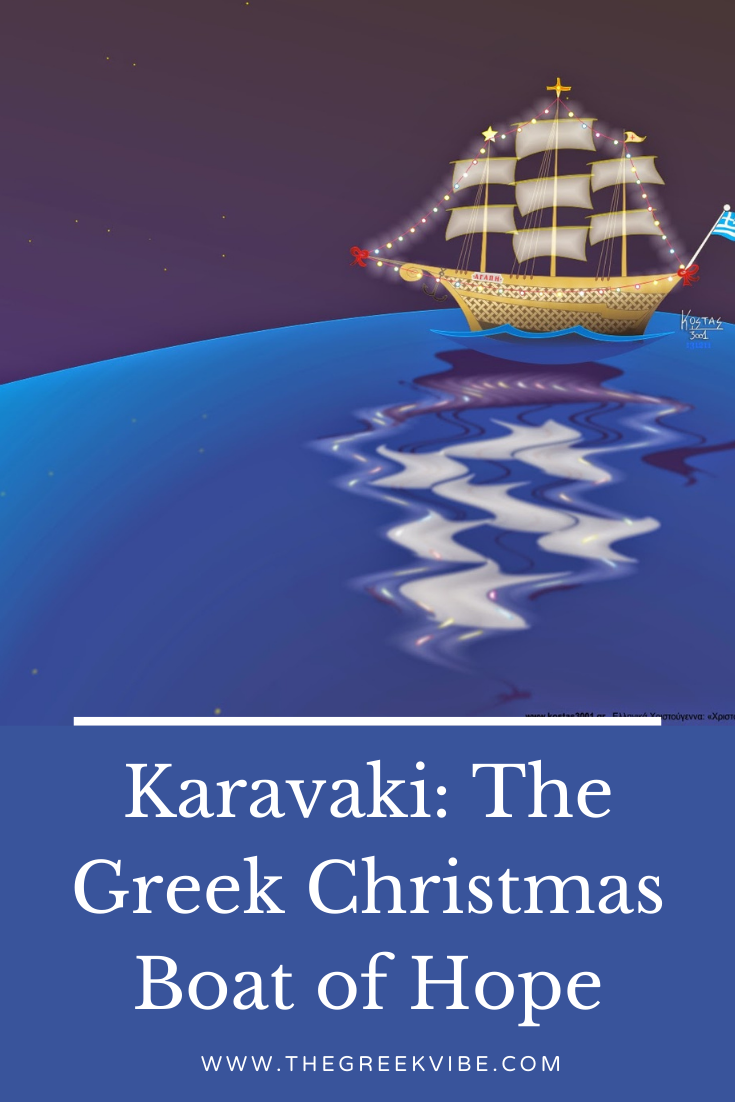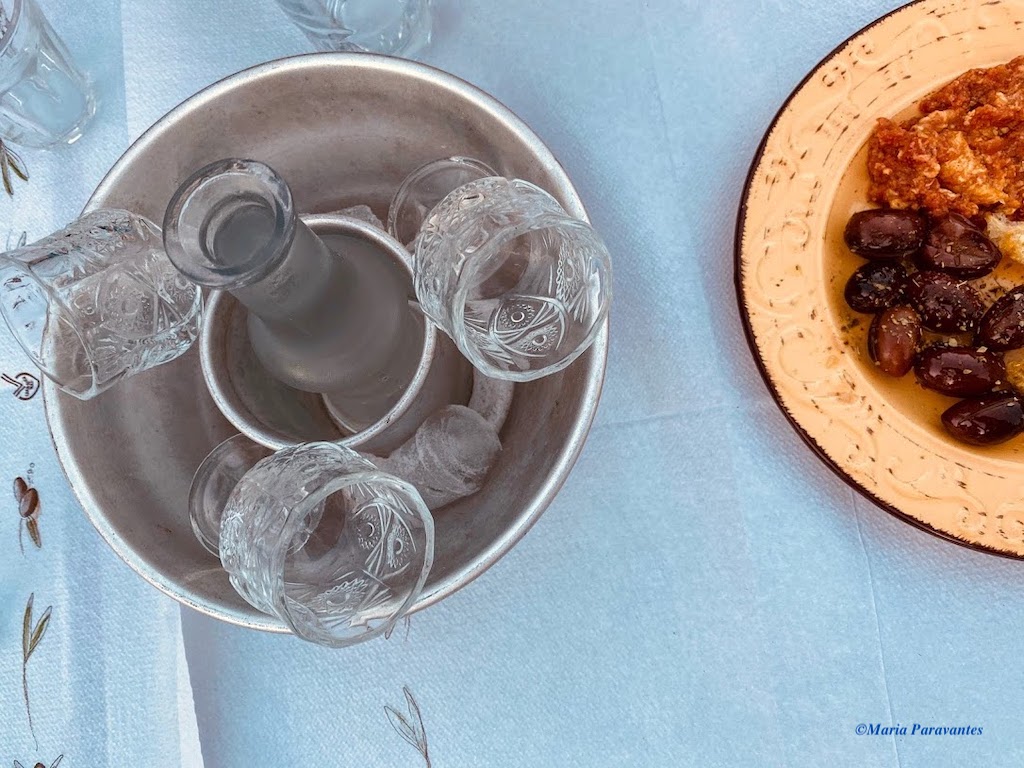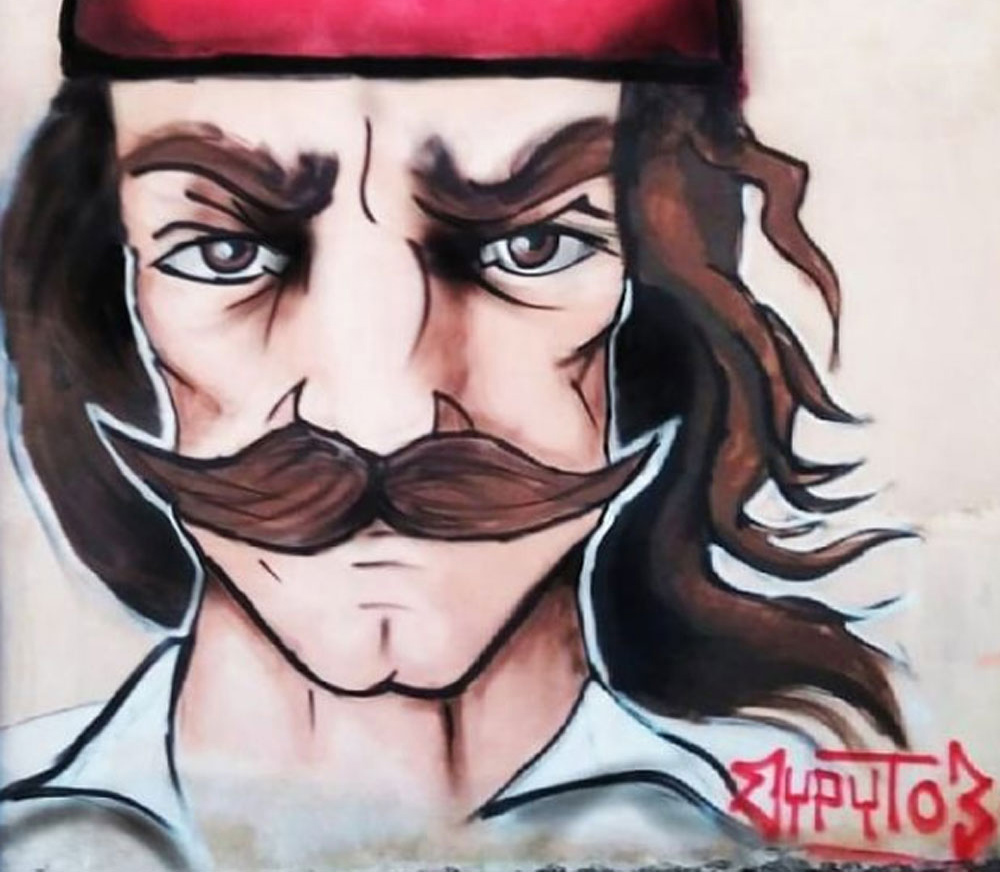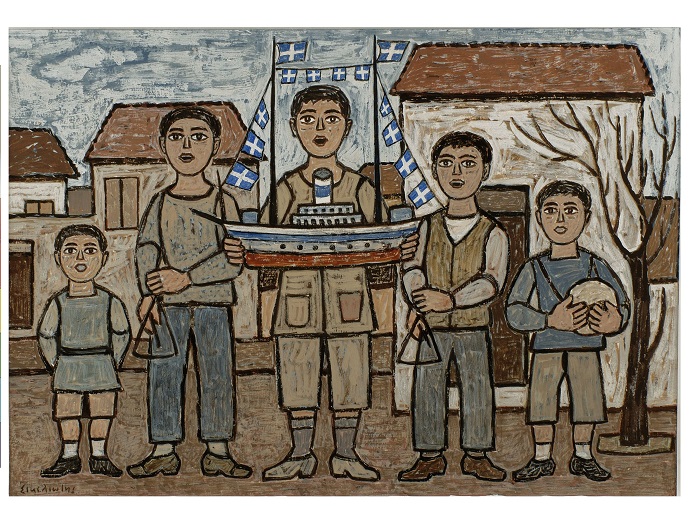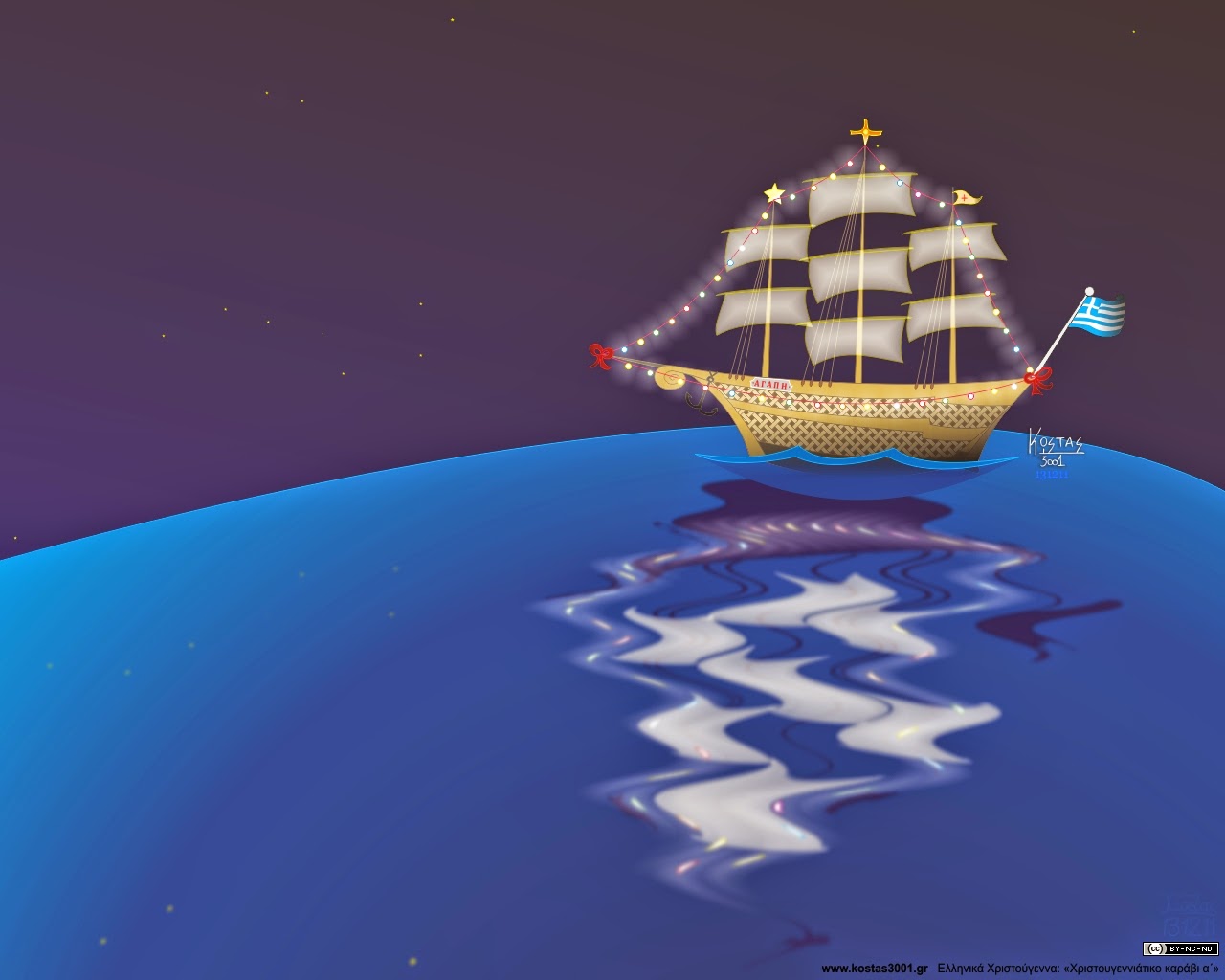
Imagine pushing your way through the streets of a Cyclades island in the winter as the northern wind rages on. The darkness and harshness of the island winter in the Aegean is sweetened by the twinkling lights of boats in the windows of the tiny whitewashed homes.
Welcome to traditional Christmas in Greece.
Though viewpoints differ with regard to the history of the Greek Christmas “karavaki” – which means “small boat” – Greeks across the country decorated boats for Christmas instead of the omnipresent evergreen tree up until the late 1800s.
The “karavaki” or boat was particularly popular in Greek island homes or in villages by the sea.
According to some experts, the boat was carried around by children singing Christmas carols on the Greek islands as a wish for a good year for their sailor relatives. It is believed to actually have evolved from the model of a church which they were said to have held. The church is also symbolized as an ark and thus the boat came into being.
►Kallikantzari: The Trolls of Greek Christmas
Before the Christmas Tree in Greece
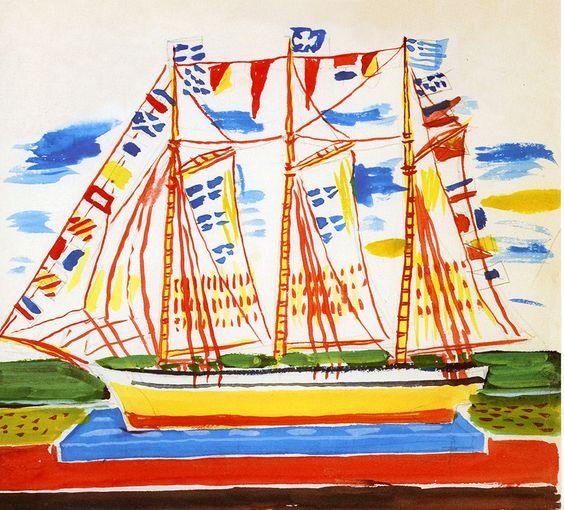
Before the tree and the boat, Greeks decorated the “Christoxylo” which means the “wood of Christ” and was either from a pear or wild cherry tree. It was also known as the “Dodekameritis” as it symbolized the 12 days of Christmas – “dodeka” meaning 12 and “meres” days.
The wood was thorny because it was meant to ward off the “Kalikantzarous”, a group of trolls that made their way out of the inner depths of the earth once a year during Christmas to wreak havoc. However, it is during these 12 days that the earth is saved because the kallikantzaroi, eager to get their hands on the Greek sweets and to make mischief, stop chopping the trunk that holds the earth. By the time Christmas and New Year’s are over and they get back to chopping, the trunk has grown again.
💡Don’t know what to get everyone for Christmas this year? How about gifts inspired by Greece?
The christoxylo – much like the boat – was placed by the fireplace to keep evil spirits awas as it was the easiest way to enter the house at night!
In 1833, the first time a Christmas tree – an import from the Bavarians – went up in King Otto’s palace in Nafplion (the first capital of Greece) and later in Athens.
It was only after World War II and mainly after the 1950s that the colorful Christmas tree as we know it today secured its place in Greek homes.
Many believe that the “karavaki” tradition did not endure due to the sadness and melancholy memories it evoked of separation and of loved ones leaving for sea.
►What Do Greeks Do on New Year’s
What Does the Greek Christmas Boat Represent
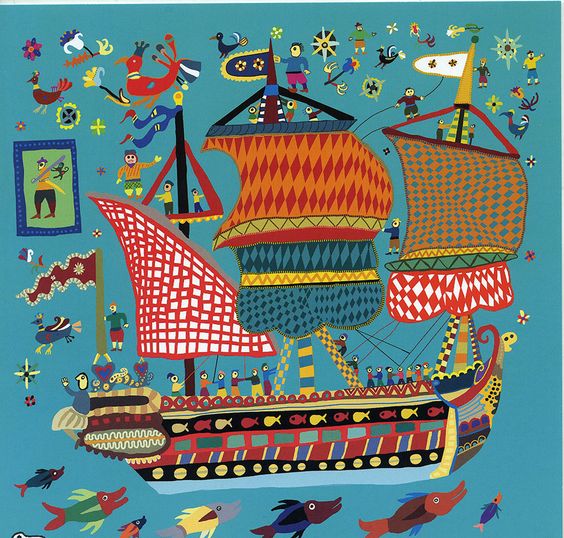
With a vast seafaring tradition and the country with the largest coastline in Europe, not to mention home to some of the world’s most powerful shipowners, it’s no wonder the Greeks love the sea. It’s part of their being.
In the past, Greeks living on the islands depended solely on the sea for their livelihoods, whether as fishermen, boat makers or owners. Greeks emigrated on boats. And our greatest mythical character, Odysseus, spent 10 years of his life on a boat seeking Ithaca.
I should remind readers that up until fairly recently – the 1980s – many of the Greek islands that today attract thousands of visitors to their shores were isolated in the midst of the Aegean, many with no or few ferry connections to Piraeus and no water or electricity.
Imagine that? Traveling for almost a day or even more to your island and then being dropped off on a “lantza” – a tender boat – as the big ferries known as “vaporia” had nowhere to dock… there were no large ports.
So you can understand the Greek islanders’ connection with the beloved and often frightening sea, which on the one hand, offered them food and wealth, and on the other, took their loved ones away.
💡Are you in the process of getting your loved ones and friends gifts for the holidays? Get inspired with my selection of fantastic Greek-style gift ideas.
Hopes of Being Reunited
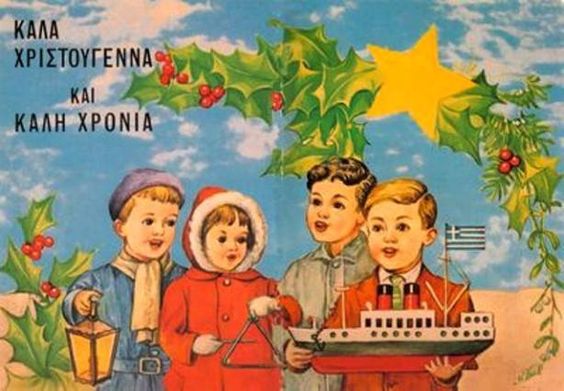
This also explains why Greeks offer “tamata” – dedications or votives depicting boats or kaikia to saints. If you visit the Panagia of Tinos, the miracle worker, you will see dozens of silver or gold tamata of boats by pilgrims or worshippers who called on the Virgin Mary to return their loved ones lost at sea or as a request for their safe return or journey.
In the 1950s, ’60s and ’70s, most families on the islands saw off one or more of their members as sailors, seamen or captains.
As I’ve explained in my ‘Kalanta’: The Greek Christmas Carols post, Christmas was not a massive celebration in Greece as is Orthodox Easter. It was more low key. It was also a time when many families hoped to see their loved ones return from sea.
💡Looking for inspired gift ideas? Make sure to check out this handpicked selection perfect for Greece fans.
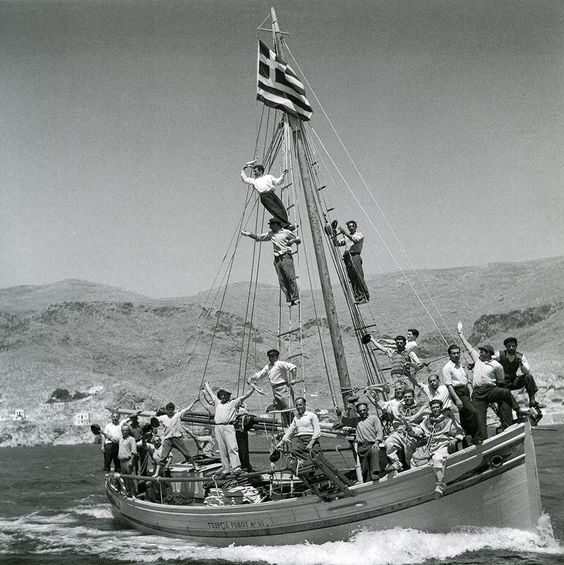
Yearning children missing their fathers or brothers would often go out collect pieces of old cloth, paper, sea wood and items washed ashore and they would craft beautiful little boats inspired by the tales they would hear about the mysteries and life at sea.
And so we have the “karavaki” in the window and the island “kalanta” (Christmas carols) which always mention the sea.
The handmade boats would be carried from door to door when the youngsters went carolling on Christmas Eve. Once the carols were over, the mistress of the house would place sweets into the boat.
►Epiphany Day: When Greece Blesses the Waters to Mark a New Start
The Greek Karavaki & the St Nicholas Connection
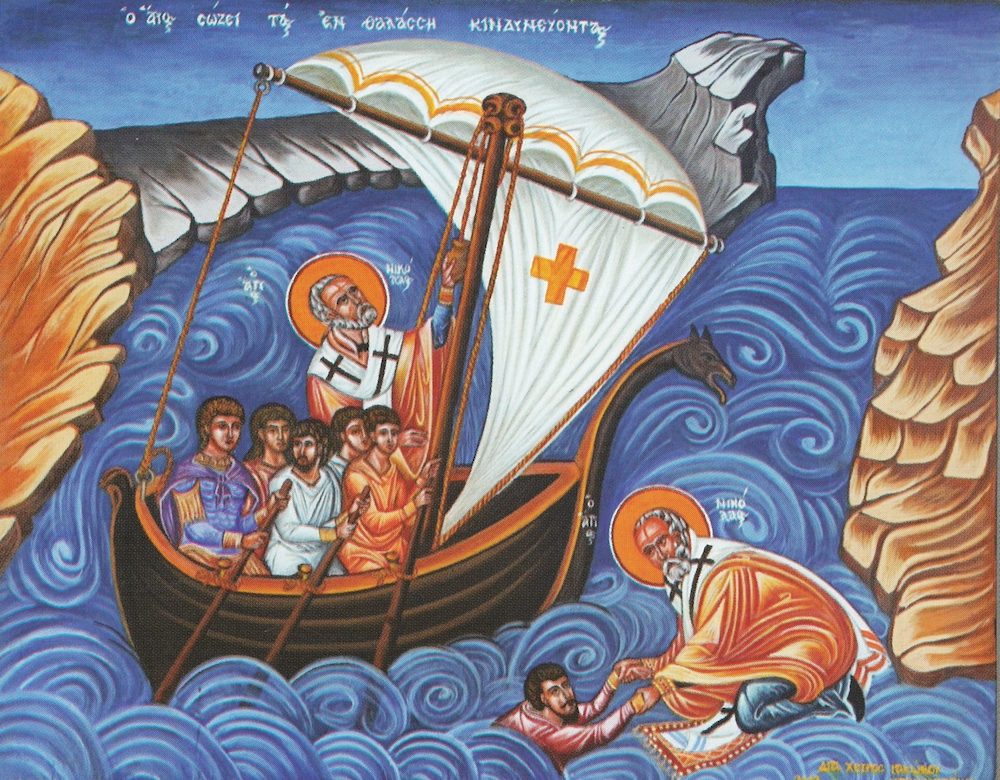
The patron saint of most Greek islands and of the Greek Navy is St Nicholas. Not by chance! He is the protector of sailors and fishermen and his feast day (giorti) is celebrated on December 6 with all sorts of happenings on boats and ships and at ports countrywide.
Also known as Nicholas of Bari, Agios Nikolaos was born in the Greek seaport of Patara, Lycia in Asia Minor, during the time of the Roman Empire.
He was known for his miracles and his secret gift-giving and is considered to be the forerunner of Santa Claus (“Saint Nick”) through Sinterklaas.
Among the many tales of his wonders is a story of his calming a very stormy sea during a trip to the Holy Land.
►Vassilopita: A Greek New Year’s Cake Bearing Gifts
The Greek Karavaki & its Meaning Today
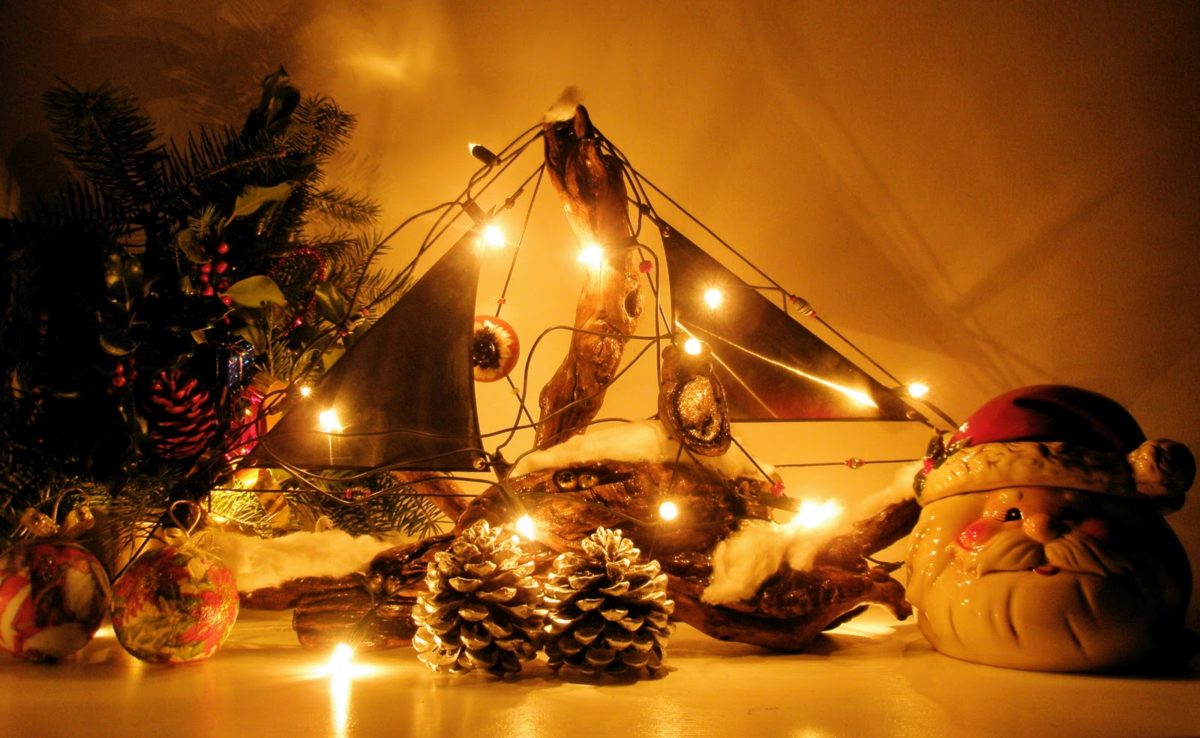
In the 1970s, Greek authorities mulled the idea of reviving to the karavaki tradition due to its imagery. The idea was rejected.
Today, as more and more people go back to their roots and return to traditions, the Greek Christmas boat is making a comeback. Not only does it embody Greece and its vast history at sea, but can also be a more environmentally-friendly option than the tree.
The karavaki is now also seen as tourist attraction with dozens of cities and villages across the country decorating both boats and trees.
The traditional Greek Christmas “karavaki” epitomizes all that it is to be Greek. I do believe our famed Nobel Prize-winning poet Odysseas Elytis said it best:
“If you take Greece apart, in the end you will be left with an olive tree, a vineyard and a boat… just enough to rebuild Greece”.
Odysseas Elytis
For the Greek church and not only, the boat marks the arrival of Christ’s love as well as our own new journey into life, a chance to do things differently, a fresh start, and of course freedom!
♫ I end today’s post with Greek Christmas carols from the island of Ikaria calling on the Lord to keep the blessed boat safe and to bring back loved ones.
The Greek Vibe Tip
For those who can make it to the island of Chios during the holidays, you’ll get a chance to see the “Agiovasiliatika Karavakia” competition. On New Year’s Eve, teams of young boys gather in the main square after dragging handmade naval ships across town. The boats are dressed in lights. The boys sing carols and send out wishes for safe travels. Each team consists – as in real life – of captain and crew. The best boat and team presentation wins.
♬ Don’t forget to check out The Greek Vibe Greek Christmas playlist on Spotify
Enjoy this Post? Share and Pin it!
